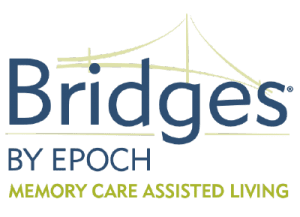There will come a time that you, as a caregiver to someone with dementia, will have to decide if your loved one requires more assistance than you can provide. Due to the degenerative nature of dementias like Alzheimer’s disease, the individual’s needs become increasingly severe to the point that they need 24/7 assistance. For many families, the answer to this is to move their loved one into a dedicated memory care assisted living community.
“Making this decision can be incredibly stressful for families, even though they understand that it’s best for their loved one,” says Amanda Jillson, Executive Director at Bridges® by EPOCH at Nashua, a memory care assisted living community in Nashua, NH. “The next step can be just as hard: downsizing their loved one’s living situation and preparing everyone for the move to the new community.”
Amanda says that the downsizing process can be more difficult than people expect, not simply because of the amount of work it requires, but also because you’re saying goodbye to a chapter of your loved one’s life and all the memories that were made in the home. “Remember to accept and process your feelings, and understand that it’s okay to be sad,” she says. “Working through your emotions will take time. Having a plan in place to help with the process of moving your loved one can help reduce some of your stress during this difficult time, making it a little bit easier.”
Whenever possible, says Amanda, involve your loved one in the downsizing process and decision-making. “They will be going through many emotions as well, no matter what stage of memory loss they are in,” she says. “Allowing them to take an active role in choosing what items will go or stay and what their new home will be like can help them feel more in control, reducing anxiety and tensions during this emotional time.”
Downsizing Tips for Moving to Memory Care
Communicate, and then communicate some more. Always remember that your loved one has the right to be a part of decision-making when it comes to things that directly affect them. Your role in this will be to communicate what’s going on – as much as possible, and as often as needed. You may meet with resistance, but remaining calm, positive and offering your loved one choices can go a long way. Consider discussing with a staff member or a counselor on how best to navigate this situation.
Make a blueprint. Literally. Once you’ve selected a community for your loved one, get a floor plan for their new apartment. Use this as a tool for helping determine what items of furniture should go with your loved one and what items are simply not right for the space. After you’ve figured out what’s going and what’s staying, use the floor plan to arrange and organize the items so you know where everything will go in advance. It’s much easier to move drawings around a sheet of paper than it is to lug furniture from one spot to another on moving day.
Use creativity to preserve collections. Many people have collections, like dolls or figurines or commemorative glasses. This can pose an issue when downsizing for memory care. Choose one or two of the most significant pieces of the collection and then take photos of the rest that can be combined into a book that your loved one can enjoy without having the bulk of all those items.
Designate specific, special items. What are your loved one’s favorite things? Maybe he or she has a favorite chair, or blanket, or pillow or any other item. Determine what items absolutely must be taken to the community to help make the place feel more homelike. Other less-important items can be donated or given to family.
Pare down the wardrobe. Go through your loved one’s closet and choose several outfits and essentials they love. Although it’s always nice to have choices, whittle down their clothes to the things they love best – that one sweater they never wear anymore shouldn’t be going anywhere but the donation bin.
Preparing for the Move
Downsizing is just one part of the moving process (although it’s a biggie). While you’re accomplishing that, here are some tips to help you get you, your loved one and your loved one’s things ready for when the big day comes around.
Take your time (if possible). If you’re able to do so, don’t rush the move. This will give you time to feel confident in your decisions, which will help you be less anxious and, in turn, your loved one will be less anxious.
Get involved in community life before moving in. If your loved one is in early to mid-stage dementia, it may be beneficial to visit the community several times before moving in. Attend an event or activity, join in for lunch or dinner and walk around the grounds to familiarize yourselves a bit. Talk with the staff to see what sort of involvement might be best for your loved one so they feel less insecure when it’s time to move in for real.
Create a schedule for how to get from Point A to Point B. Once you’ve scheduled a move-in date, work backwards and create a schedule that will help you have the smoothest transition possible. Mark dates for when you want to have things organized like movers, downsizing, packing and other things. If you need help, look into resources such as moving companies and managers who specialize in helping seniors and can help as much or as little as needed.
Set up your loved one’s room. If possible, visit the community a few days before moving day to set up your loved one’s room. Familiar items, family pictures and other homey touches will make the place feel more like “home” and help your loved one feel calmer.
Plan for moving day. Moving day is the day when all your plans come to fruition. Schedule time off work and ask a friend or family member to help out. When you get to the community, plan to spend some time there to help your loved one get settled. You may want to spend all day, or you may want to come and go several times. Don’t forget to put together an “unpack first” box so that you have everything you need immediately when you arrive at the new place.
“Moving to a memory care community requires coordination and patience, but the end result is worth it,” says Amanda. “When your loved one moves to a community like Bridges® by EPOCH at Nashua, they benefit from around-the-clock care from compassionate, professionally trained staff. They also enjoy the freedom that comes from a secure community designed specifically for their needs, and experience ongoing opportunities for exercise, education and social engagement, all of which help create the highest quality of life possible.”
A Fulfilling Lifestyle
Bridges® by EPOCH at Nashua provides assisted living memory care that is comfortable, positive, safe and engaging. Exclusively dedicated to caring for those with Alzheimer’s disease and other forms of dementia or memory impairment, we’ve created a wellness-focused lifestyle that promotes dignity and individual preferences. Our memory care professionals receive specialized and ongoing training designed to help residents maximize their independence in a secure, calm environment – making a truly positive impact on the lives of our residents each and every day.
Many Services, One Monthly Fee
Our dedicated memory care and services celebrate life and support each resident’s individual strengths. No matter what stage of memory loss a resident may be experiencing, their family can be sure that with us, their loved one is safe, secure and happy.
Stunning, Purpose-Built Design
Featuring a stunning design and luxuries only a new community can offer, Bridges® by EPOCH at Nashua is so much more than a beautiful place to live . . . It’s a community with a singular focus: enrich the lives of our residents and help their families enjoy meaningful relationships with them. Our evidence-based design features attributes that make life easier for those with memory loss: soft colors, directional cues, aromatherapy and interactive life stations.
Contact us today to learn more.


